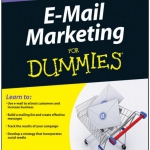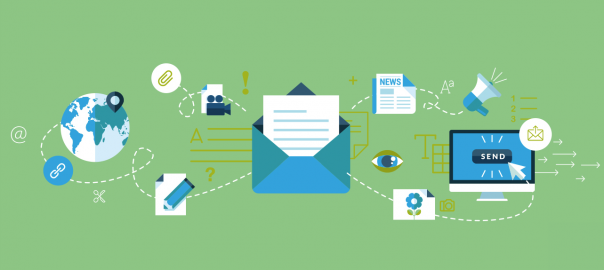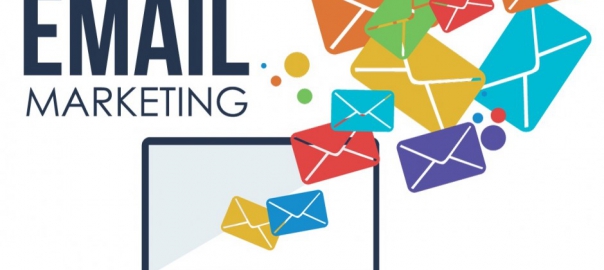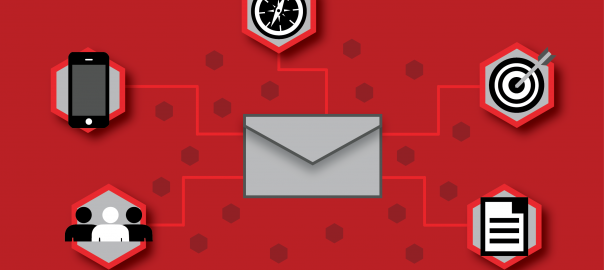Organizing Your E-Mail Content into Themes Based on Objectives
Stating clear objectives gives you a platform for creating e-mail content that accomplishes your objectives. Running a small business involves frequently setting new objectives and developing new e-mail content in line with those objectives. When your time is limited, you might be tempted to create e-mail content that fits your schedule better than your objectives.
One of the most important reasons to use specific objectives to guide the creation of your e-mail content is to avoid bombarding your customers and prospects with all your information at the same time.
Sending all the information you can think of to everyone and then hoping that someone finds something interesting in your e-mails isn’t a strategy, and it’s not going to reward all your hard work. Avoid using the following e-mail strategies to prevent aimlessly e-mailing people with all your information:
- Newsletters with mixtures of themes, multiple unrelated articles, and numerous calls to action
- Promotions featuring multiple contrasting products along with non-promotional content Announcements pertaining to a select group of contacts but sent to everyone
- Procedural e-mails including excessive or confusing promotional messages
While you develop e-mail content, think about how your audience will perceive your intentions. If you want your audience to help you accomplish your objectives, your audience members need to know why you’re sending them an e-mail and what you’re asking them to do. Because you can’t just tell your audience to buy something (um, because you’re trying to buy a beach house in Hawaii), you have to translate your objectives into themes that clue your audience in on your objectives without explicitly telling them what you’re trying to accomplish.
E-mail messages make more sense to your prospects and customers when the content you create and deliver is tied together under familiar themes. A theme is the main idea of your entire e-mail campaign. Themes are not the same as formats. Format refers to the classification and configuration of an e-mail.
Most objectives can be grouped into one of four familiar themes:
- Promotional
- Informational
- Procedural
- Relational
E-mails can sometimes include content with multiple themes, but in such cases, it’s usually best to have one main theme and several related themes grouped together visually under the main theme.
Table of Contents
Promotional themes
When the main objective of your e-mail is to persuade your audience to take a specific action or to ask for a specific purchase decision, make sure your e-mail includes only content that supports and relates to a promotional theme.
For example, if your e-mail’s main objective is to ask your audience to purchase a specific product, then including an invitation to a related product seminar would follow your theme. Comparatively, including an invitation to an unrelated event would detract from your theme. Examples of content you might include in an e-mail with a promotional theme include
- Product images and descriptions
- Coupon
- Testimonials
- Headlines and links that call for action
- Links to information that supports the main call to action
- Directions on how to take action
Informational themes
When the main objective of your e-mail is to inform your audience to help them form an opinion, include only that content which supports and relates to an informational theme. Informational themes differ from promotional themes: Informational themes rarely include a specific call to action other than reading the message content.
For example, a newsletter with an informational theme might have three articles about the benefits of clean air. The following types of content are informational in nature:
- News articles
- Stories and narratives
- Opinions and viewpoints
- Announcements with no specific call to action
- Event calendars
- Frequently asked questions (FAQs)
Procedural themes
When the main objective of your e-mail is to give official instructions or explain processes, include content that supports and relates to a procedural theme. Procedural messages are like informational messages in that they rarely call for specific action outside of reading the content in the e-mail. Examples of content you might include in an e-mail with a procedural theme are:
- Text welcoming a new customer or list subscriber
- Notifications and official statements
- Footer text explaining a shipping or privacy policy
- Disclosures and warranties
Relational themes
When the main objective of your e-mail is to build or deepen personal relationships, your e-mail should include only content that supports and relates to a relational theme. Relational themes are typically one-way communications with no call to action. Examples of content you might include in an e-mail with a relational theme include:
- Greetings and acknowledgments
- News or stories about personal experiences
- Customer recognition messages
Multiple themes When your objectives tell you to include multiple themes in one e-mail format, be extra careful to ensure that your themes share an obvious main theme in some way. This newsletter is sent to prospects and customers and contains the following:
- Promotional: An advertisement for a new type of athletic cleats.
- Informational: Several announcements and articles on various topics related to to the company mission.
- Relational: An article showing readers that the company is concerned about recycling and green products.
To include multiple themes in your e-mails, It is recommended to do the followings:
- State the main theme clearly in the beginning.
- Group subthemes together with the layout and design elements, such as headings and white space.
- If you can’t find the main theme to tie two together, use two separate e-mail formats and send the messages separately under their own themes. For example, a golf club sale might work in conjunction with information about a new store location under a moving sale theme, whereas new location information combined with informative golfing tips might be too distinct to include under a common theme.





